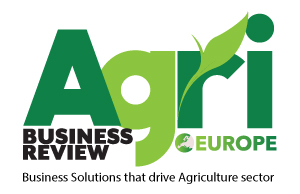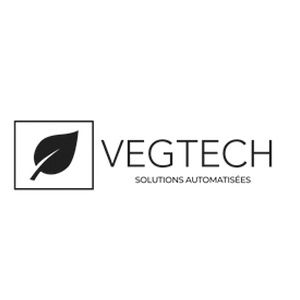Advancing Canadian Crop Production Through LED Innovation
Friday, November 21, 2025
Canada’s agricultural landscape is being reshaped by rising concerns over food security, the demand for year-round fresh produce, and the pursuit of sustainable practices. Central to this transformation is the rapid adoption of agricultural LED lighting systems—a technology that has become a cornerstone of modern controlled environment agriculture (CEA) and an essential driver of crop optimization nationwide. The Canadian market for agricultural LED lighting is experiencing strong growth, mirroring global trends that highlight the surging demand for advanced horticultural lighting solutions. This momentum extends across multiple sectors, from large-scale commercial greenhouses and vertical farms to specialized research facilities.
The Core Advantages Driving Adoption
Their exceptional energy efficiency primarily drives the widespread adoption of LED systems, as they use significantly less electricity than traditional HPS or fluorescent lamps while providing equal or superior light output. This reduction in energy consumption directly translates into substantial operational cost savings for growers, a critical consideration in Canada's often energy-intensive agricultural sector. The lower heat emission from LED fixtures is a significant benefit, particularly in enclosed growing environments. A reduced heat load means less energy is expended on cooling systems, further contributing to overall energy efficiency and creating a more stable and less stressful environment for plant growth. This characteristic also allows for closer placement of lights to the plant canopy, maximizing light delivery without the risk of heat damage.
Beyond energy savings, the ability to precisely tailor the light spectrum emitted by LEDs is a revolutionary aspect for agricultural applications. Plants utilize specific wavelengths of light for various physiological processes, including photosynthesis, vegetative growth, flowering, and fruiting. LED technology allows growers to deliver precise combinations of red, blue, green, and even far-red light, optimizing the "light recipe" for each crop at every stage of its development. For instance, blue light is crucial for vegetative growth and chlorophyll formation, while red light is vital for flowering and fruiting. This spectral tunability enables growers to fine-tune growing conditions, promoting healthier plants, accelerating growth cycles, and enhancing the nutritional content and quality of the produce. The versatility of LED systems in mimicking or strengthening specific aspects of natural sunlight enables unprecedented control over plant development, resulting in increased yields, improved crop characteristics, and even influencing taste and shelf life. The extended operational lifespan of LED systems, often exceeding 50,000 hours, further contributes to their economic viability by reducing maintenance requirements and replacement costs.
Diverse Applications Across Canadian Agriculture
The applications of agricultural LED light systems in Canada are diverse and expanding, reflecting the technology's adaptability to various farming methodologies. Greenhouses, a long-standing pillar of Canadian horticulture, are increasingly retrofitting their operations with LED lighting or incorporating it into new constructions. This allows for supplemental lighting during periods of low natural light, thereby extending growing seasons and enabling the year-round production of high-value crops such as tomatoes, cucumbers, peppers, and various leafy greens. The ability to maintain consistent growing conditions regardless of external weather fluctuations ensures a steady supply of fresh produce for Canadian consumers.
Vertical farms, with their stacked growing layers and inherently controlled environments, are the most visible beneficiaries of LED technology. These urban farming initiatives, often located in or near population centers, rely entirely on artificial illumination. The energy efficiency and precise spectral control of LEDs make them an indispensable component for maximizing yield within a compact footprint, addressing challenges of land availability and reducing transportation costs. These systems enable multi-layer cultivation, significantly increasing productivity per unit area. Beyond commercial food production, LED lighting is also being widely adopted in research institutions for advanced plant science studies, where precise manipulation of light environments is crucial for understanding plant physiology and developing new crop varieties. Furthermore, specialized cultivation facilities for niche crops, such as medicinal plants, where strict environmental control and consistent product quality are paramount, are also leveraging the capabilities of LED light systems. The ability to replicate and optimize specific light conditions for these sensitive crops underscores the versatility of the technology.
Connection to Smart Farming and Future Outlook
A broader national commitment to sustainable and innovative farming practices further supports the Canadian agricultural sector's embrace of LED technology. The integration of LED lighting aligns perfectly with the goals of reducing carbon footprints and optimizing resource utilization. Beyond just lighting, these systems are often part of larger, sophisticated controlled environment agriculture setups that incorporate advanced sensor technology, data analytics, and automation. This enables real-time monitoring of environmental parameters, including temperature, humidity, CO₂ levels, and nutrient delivery, as well as precise control of light intensity and spectrum. Growers can make data-driven decisions that further optimize light delivery, nutrient uptake, and overall growing conditions, leading to enhanced efficiency and productivity.
The trajectory for agricultural LED light systems in Canada is one of continued innovation and expanding adoption. Ongoing research and development are focused on creating even more efficient LED chips, developing lighting strategies that adapt to plant needs throughout the day, and integrating artificial intelligence to refine light recipes further and automate cultivation processes. This next generation of systems promises even greater energy savings, higher yields, and improved crop quality. As Canadian growers increasingly recognize the multifaceted benefits of embracing this agricultural revolution, the industry is poised for sustained growth, contributing significantly to food security and environmental sustainability across the nation.















